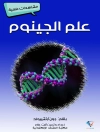This outstanding overview sets a new standard for a methods book on pathogen detection. The first chapter provides an outline of currently used routine methods, including their background, strengths and weaknesses, as well as comparing them to newer methods. The following chapters then cover novel methods already in wide use and which are still more experimental for routine purposes.
An invaluable resource for all medical laboratories and clinical institutions dealing with infectious diseases.
Inhaltsverzeichnis
Preface XI
List of Contributors XV
1 Unmet Medical Needs in Life-Threatening Infections – Caring for the Critically Ill 1
Michael Bauer, Andreas Kortgen, and Mervyn Singer
1.1 Life Threatening Infections and Sepsis – Defining the Problem 1
1.2 Sepsis as a “Hidden Healthcare Disaster” 3
1.3 Microorganisms and Types of Infection Triggering Sepsis 4
1.4 Emerging Problems Related to Resistance in Bacterial Infections 5
1.5 The Role of Fungi and Viruses 5
1.6 The Need for New Approaches in Diagnostics of Life-Threatening Infection and Sepsis 7
1.7 Rapid and Sensitive Culture-Independent Strategies to Identify Blood Stream Infection 8
1.8 Beyond Infection – Profiling the Immune Response of the Septic Host 10
1.9 Host Factors Contributing to Pathogenesis of Sepsis 11
References 13
2 Identification Methods – An Overview 19
Oliwia Makarewicz, Claudia Stein, Wolfgang Pfister, Bettina Löffler, and Mathias Pletz
2.1 Taxonomy of Pathogenic Organisms 19
2.2 Microscopic Methods 20
2.2.1 Stains 20
2.2.2 Autofluorescence 29
2.2.3 Immunofluorescence 30
2.2.4 In Situ Hybridization 30
2.2.5 Dark-Field Microscopy 31
2.3 Culture-Based Methods 31
2.3.1 Blood Culture 32
2.3.2 Automated Differentiation Systems 33
2.3.3 API System 35
2.3.4 Selective Agar 36
2.3.5 Susceptibility Testing 37
2.3.6 Other Methods 38
2.4 Nucleic Acid-Based Techniques 38
2.4.1 PCR 39
2.4.1.1 Real-Time PCR 39
2.4.1.2 Multiplex-PCR 40
2.4.1.3 RAPD and rep-PCR 40
2.4.1.4 Microarrays 40
2.4.1.5 RFLP 41
2.4.2 Sequencing 41
2.4.2.1 Ribosomal RNA Genes 41
2.4.2.2 MLST 42
2.4.2.3 NG Sequencing 42
2.5 Serology 42
2.5.1 Antigen–Antibody-Based Methods 44
2.5.1.1 Agglutination 44
2.5.1.2 Immunodiffusion 45
2.5.1.3 Quantitative Immunoassays 45
2.5.2 Automated Immunoassays 46
2.5.3 Applications of Serological Test 47
2.5.3.1 Types of Human Antibodies and What They Indicate? 47
2.5.3.2 Validity of Antibodies against Opportunistic Species 47
2.5.3.3 Specificity of Fungal Antigens 48
2.5.3.4 Specific Urine Antigen Tests 48
2.5.4 Biomarkers 48
2.6 Conclusions and Perspectives 49
References 50
3 Nucleic Acid Amplification Techniques 55
Marc Lehmann and Roland P.H. Schmitz
3.1 Introduction 55
3.2 The Basic PCR Protocol 56
3.3 Primer Design 60
3.3.1 Specific versus Broad-Range Primers and the Fate of False Targeting 63
3.4 Modified End-Point PCR Protocols 66
3.5 Non-PCR NAT: Isothermal Amplification Protocols 70
3.6 Quantitative PCR 73
3.6.1 Quantification in q PCR 77
3.6.2 Melting Curve Analysis (MCA) 78
3.7 Controls, Probing, and General Aspects of Result Interpretation 78
3.7.1 Strategies in Amplicon Verification 80
3.7.1.1 (DNA) Microarray 80
3.7.1.2 Flow Cytometry 81
3.7.1.3 Mass Spectrometry 81
3.7.2 PCR Inhibitors 82
3.8 Preanalytics 83
3.8.1 Sample Volume 83
3.8.2 Cell Lysis 84
3.8.3 Nucleic Acid Isolation and Preparation 85
3.9 Fields of PCR Application 86
3.9.1 Sequencing 86
3.9.1.1 Pyrosequencing 87
3.9.2 Typing and Epidemiology 88
3.9.3 Pathogen Detection in Complex Clinical Samples 89
3.9.4 General Aspects of Result Interpretation 90
3.9.4.1 Sensitivity and Specificity 90
3.9.4.2 NAT versus Culture 92
3.9.4.3 The Fate of Antibiotic Resistances Detection 93
3.10 Microbial Trace Detection in BSI, Ascites, and Synovial Fluids 94
3.10.1 Grown Blood Culture Media as Samples 97
3.11 Upcoming Routine Solutions – Dawn of Assay Automation 98
3.12 Conclusion and Perspective 100
Acknowledgment 101
References 102
4 DNA Microarrays for Pathogen Detection 113
Holger Schulze, Maya Rubtsova, and Till T. Bachmann
4.1 Introduction 113
4.2 DNA Microarrays for the Detection of Bacterial Pathogens 114
4.2.1 Major Bacterial Diseases 114
4.2.1.1 Blood Stream Infections/Sepsis 114
4.2.1.2 Pneumonia 122
4.2.1.3 Infectious Diarrhea 123
4.3 Antibiotic Resistance Detection 155
4.3.1 Gram-Negative Bacteria 165
4.3.2 Gram-Positive Bacteria 170
4.3.2.1 Staphylococcus aureus 170
4.3.2.2 Mycobacteria 171
4.4 DNA Microarrays for Virus Diagnostics 173
4.4.1 Human Papillomaviruses 177
4.4.1.1 Commercial HPV Tests 178
4.4.2 Respiratory Viruses 180
4.4.3 Enteric Viruses 182
4.4.4 Hepatitis Viruses 182
4.5 DNA Microarrays for Detection of Fungal Pathogens 184
4.6 DNA Microarrays for Parasite Diagnostics 200
4.6.1 Malaria 200
4.6.2 Waterborne Parasites 201
4.6.3 Other Parasites 203
4.7 Conclusion an Outlook 207
References 207
5 MALDI-To F 221
Stefan Zimmermann
5.1 Introduction 221
5.2 MALDI-To F Technology 222
5.3 Bacterial Identification Using Mass Spectrometry 225
5.4 Culture-Independent Rapid Identification of Clinical Pathogens 234
5.5 Antibiotic Susceptibility Testing Using Mass Spectrometry 239
References 244
6 IR and Raman Spectroscopy for Pathogen Detection 253
Ute Münchberg, Sandra Kloß, Dragana Kusi´c, Susann Meisel, Ralf Heinke, Stephan Stöckel, Petra Rösch, and Jürgen Popp
6.1 Introduction 253
6.2 Bulk Analysis 256
6.2.1 IR and NIR Absorption Spectroscopy 256
6.2.2 Raman Spectroscopy with Excitation in the NIR Region 260
6.2.3 Resonance Raman Spectroscopy 263
6.3 Excitation with Visible Wavelengths 264
6.4 UV-Resonance Raman Spectroscopy 266
6.4.1 Surface-Enhanced Raman Spectroscopy 270
6.4.1.1 The SERS Effect 270
6.4.1.2 Analysis of Bulk Bacteria Samples with SERS 272
6.5 Single-Cell Analyses 276
6.5.1 Micro-Raman Spectroscopy with Excitation in the Visible or NIR Region 276
6.5.2 Surface-Enhanced Raman Spectroscopy on Single Cells 284
6.6 Conclusion and Outlook 287
References 288
7 FISH 295
Graeme N. Forrest, Jwan Mohammadi, and Shahrzad Mohammadi
7.1 Introduction 295
7.2 FISH Techniques 295
7.2.1 PNA FISH 296
7.2.1.1 Original PNA FISH Platform 296
7.2.1.2 PNA FISH Flow Cytometry 297
7.2.1.3 Beacon-Based FISH (bb FISH) 298
7.3 Clinical Implications of PNA FISH 299
7.3.1 Gram-Positive Organisms 299
7.3.1.1 Staphylococci 299
7.3.1.2 Enterococci 302
7.3.2 Gram-Negative Probes 303
7.3.2.1 Candida 305
7.3.2.2 Beta Hemolytic Streptococci 309
7.3.2.3 Mycobacteria 310
7.3.2.4 Helicobacter pylori 310
7.3.2.5 Other Bacteria 311
7.3.2.6 Parasites 311
7.4 Summary and Outlook 311
References 312
8 Conclusions 319
Sibyll Pollok, Karina Weber, Michael Bauer, and Jürgen Popp
Index 323
Über den Autor
Jurgen Popp is Professor at the Friedrich-Schiller-University Jena where he is Director of the Institute of Physical Chemistry. He is also Director of the Institute of Physical High Technology (IPHT) Jena. In the German National Research Network on biophotonics he serves as the speaker.
Professor Bauer is the chair of the Integrated Research and Treatment Center for Sepsis at the Friedrich Schiller University Jena. Prof. Bauer graduated from the medical school of the Saarland in 1990 before moving to the Johns Hopkins Hospital for 2 years. Since 2003 he is full professor at the University of Jena.












